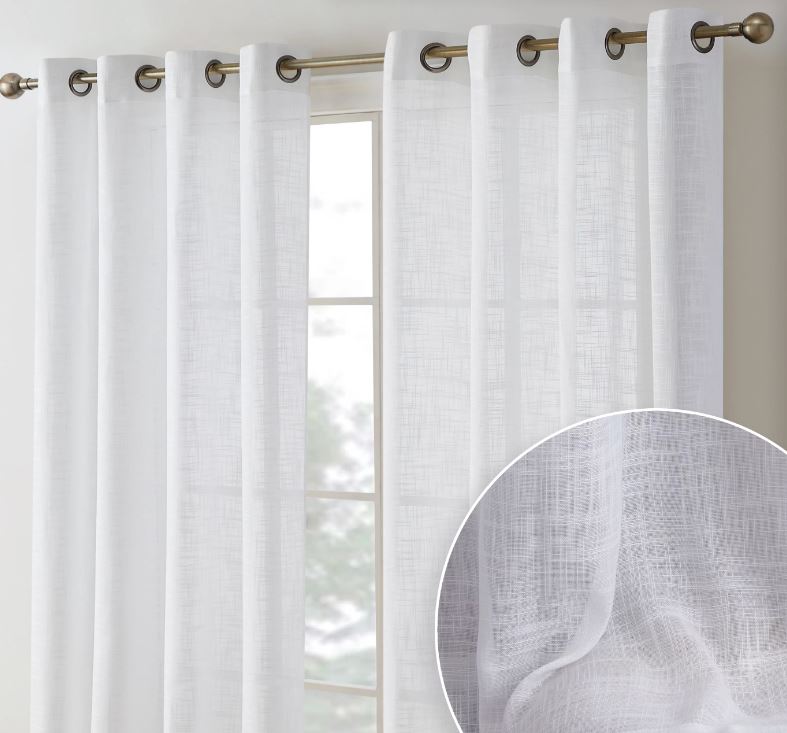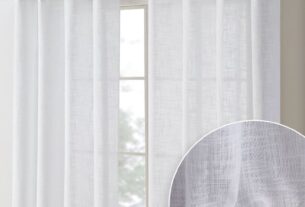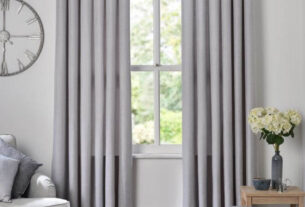In today’s world of interior design, homeowners and decorators are increasingly turning to eco-friendly materials that combine aesthetics with sustainability. Among these, linen curtains have emerged as a top choice, offering a perfect balance of elegance, functionality, and environmental responsibility. Whether you’re designing a cozy living space or a sophisticated office, linen curtains Abu Dhabi provide a natural charm that enhances any setting.
In this blog, we’ll explore why linen curtains are an excellent choice for modern homes, their environmental benefits, and how they contribute to a healthier, more stylish living space.
The Timeless Elegance of Linen Curtains
Linen has been a staple fabric for centuries, prized for its soft texture, natural beauty, and sophisticated drape. Unlike synthetic materials, linen has a unique ability to bring warmth and character to a space.
Aesthetic Appeal
Linen curtains have a soft, airy, and luxurious look that effortlessly blends with various interior styles, from Scandinavian minimalism to rustic farmhouse charm. Their natural texture and slightly crinkled appearance give a relaxed yet refined aesthetic, making them a versatile choice for any room.
Light and Airy Feel
One of the standout qualities of linen curtains is their ability to filter natural light beautifully. Unlike heavy drapes that completely block out sunlight, linen allows just the right amount of light to pass through, creating a soft, diffused glow that enhances the ambiance of a room.
Versatile Color Choices
Linen curtains are available in a wide range of colors, from neutral tones like beige, ivory, and gray to earthy greens and deep blues. This versatility allows homeowners to choose shades that complement their existing décor while maintaining a sophisticated and modern look.
Sustainability: An Eco-Friendly Choice
In a world where sustainability is becoming a priority, linen stands out as one of the most environmentally friendly fabrics. Here’s why linen curtains are a great eco-conscious choice:
Made from Flax – A Renewable Resource
Linen is derived from the flax plant, which requires minimal water, pesticides, and fertilizers to grow. Compared to cotton and synthetic fabrics, flax cultivation has a much lower environmental impact, making linen a sustainable alternative.
Biodegradable and Zero-Waste
Unlike polyester or synthetic curtains, which contribute to microplastic pollution, linen is 100% biodegradable. This means that once linen curtains reach the end of their lifespan, they decompose naturally without harming the environment.
Low Carbon Footprint
The production process of linen involves less energy and fewer chemical treatments compared to synthetic fabrics. Many linen manufacturers also follow ethical practices, ensuring fair wages and environmentally responsible production methods.
How Linen Curtains Contribute to a Healthier Home
Aside from their beauty and sustainability, linen curtains offer several health benefits that make them ideal for modern living spaces.
Hypoallergenic and Anti-Bacterial Properties
Linen is a naturally hypoallergenic fabric, making it an excellent choice for people with allergies or respiratory issues. It resists dust, mold, and bacteria growth, contributing to cleaner indoor air quality.
Moisture-Wicking and Breathability
Unlike synthetic fabrics that trap heat and humidity, linen is highly breathable and has excellent moisture-wicking properties. This helps regulate indoor humidity levels, creating a comfortable and airy environment, especially in warm climates.
Chemical-Free and Non-Toxic
Many synthetic curtains contain harmful chemicals or dyes that release volatile organic compounds (VOCs) into the air. Linen, on the other hand, is naturally toxin-free, making it a healthier choice for homes, particularly in bedrooms and nurseries.
Tips for Styling Linen Curtains in Modern Homes
Linen curtains can be styled in various ways to suit different interiors. Here are some expert tips to make the most of their elegance:
Layering for Depth and Functionality
- Combine sheer linen curtains with heavier drapes to balance light control and privacy.
- Layering neutral-toned linen curtains with textured blinds or shades adds a sophisticated touch.
Choosing the Right Curtain Length
- For a casual and relaxed look, opt for floor-length linen curtains that gently pool on the floor.
- For a clean and modern aesthetic, go for tailored or just-above-the-floor-length curtains.
Mixing with Different Décor Styles
- Minimalist Homes – Use off-white or light gray linen curtains to maintain a clean, airy feel.
- Rustic or Bohemian Interiors – Opt for earthy tones like olive green or terracotta to enhance warmth.
- Coastal Vibes – Light blue or beige linen curtains work beautifully with natural wood and rattan furniture.
Caring for Linen Curtains: Maintenance Tips
To keep linen curtains looking fresh and elegant, follow these maintenance tips:
Washing and Drying
- Use gentle, cold water washing cycles to prevent shrinkage.
- Avoid harsh detergents; opt for mild, eco-friendly soaps
- Air-dry your linen curtains to preserve their texture and longevity.
Ironing vs. Natural Wrinkles
- Linen’s natural wrinkles add to its charm, so avoid excessive ironing.
- If you prefer a smoother look, steam or lightly iron the fabric on low heat while it’s still slightly damp.
Storage Tips
- Store linen curtains in a cool, dry place when not in use to prevent mildew.
- Fold them neatly or roll them up to minimize creases.
Conclusion
Linen curtains Abu Dhabi are more than just a window treatment; they are a statement of style, sustainability, and health-conscious living. Their natural elegance, eco-friendly nature, and ability to create a breathable, comfortable space make them a must-have for modern homes.
If you’re looking for a timeless and sustainable upgrade to your interiors, linen curtains are the perfect choice. Whether you embrace their relaxed charm or style them for a sophisticated setting, they will undoubtedly elevate your home’s ambiance while keeping your environmental footprint low.





